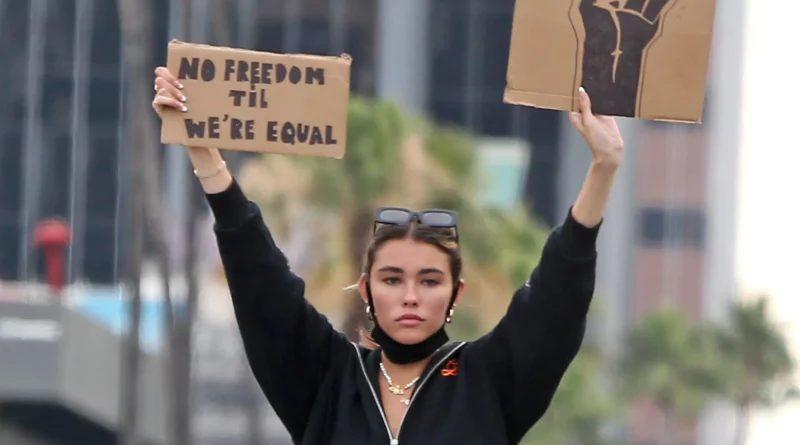Performative activism is “incredibly problematic”
What is performative activism? Well, the Boston Medical Center defines it as, “activism that is done to increase one’s social capital than because of one’s devotion to a cause.” In contrast, what is activism? Oxford Dictionary defines it as, “the policy or action of using vigorous campaigning to bring about political or social change”. So where is the line between the two and how can we identify it?
Many people during quarantine participated in posting on social media about movements like Black Lives Matter (BLM), Stop AAPI Hate, and Free Palestine. However, though these remain a problem, once the “trend” died down, people stopped posting and essentially forgot about it, even though it still greatly impacts the world we live in today.
For example, many celebrities, like Madison Beer, participated in the BLM movement. But their intentions were ill-intended. Beer, allegedly, went to protests, but rather than protesting, it looked more like a photoshoot.
“[We tell people that] if they feel strongly about these topics, then they should join us and protest. They always decline. They do this because it’s easier to just post something on Instagram instead of getting out there. These people think they are doing something, but they aren’t. Real change doesn’t happen over Instagram, it happens by getting out there and protesting for what you believe in,” said Activism Club president Natalie Bennett.
“I find the term ‘performance activism’ to be incredibly problematic. To suggest that because someone posts about a social issue on their Instagram story, that they are purely performative, and thus should be ignored, is an oversimplification. I think folks need to realize that just sharing a video, article, or image is the lowest level of activism,” said history teacher Ian Rodriguez.
It is also important to acknowledge that performative activism is not only demonstrated by people on social media but it is also shown in big companies. An example of this being when companies during LGBTQ month change their icons on their social media or post the rainbow in their stores.
Bennett and Rodriguez found common ground that a benefit of performative “activism” or performative activism is that it helps raise awareness on the issue.
There are some people out there who don’t post to raise awareness, but rather share to boost their ego and assure themselves that they are an active member in our community. However, there are also some genuine people out there who post because that may be the only thing that they can do, or that is the only thing they feel comfortable doing. That is totally okay. As long as you’re true to your intentions, there is nothing wrong with posting and informing others on these topics.
Activism is different for everybody, and everybody has their own starting point. But if you want to do more than post on social media and truly care for the cause, there are more ways that you can help than just a quick post. Researching, educating yourself, taking part in protests, donating, and signing petitions are just a few ways that you can help. In all, it is really your judgment and reasoning for what you do that determines performative activism.

